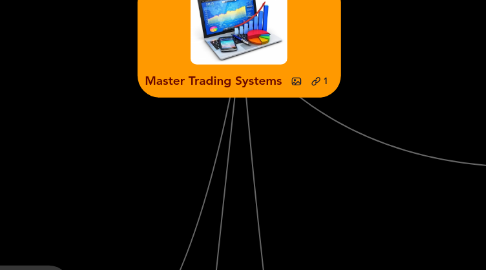
1. Community
1.1. avatars reflect ranking
2. Overview
2.1. Understanding Stock Trading Basics
2.1.1. What are trading systems?
2.1.2. Who is this for?
2.1.3. What will you learn?
2.1.4. What can you expect?
2.1.5. Who created this system?
2.1.6. Success stories!
2.2. Getting Started
2.2.1. Recommended Reading
2.2.1.1. Rule #1 - Phil Town 2007
2.2.1.2. Little Book - Joel Greenblatt 2006
2.2.1.3. Trade your way - Van Tharp 2006
2.2.1.4. High Probability - Marcel Link 2003
2.2.1.5. Market Wizards - Jack Wchwager 2006
2.2.1.6. Trend Following - Michael Covel 2009
2.2.1.7. Investors Business Daily
3. Trading Journal
3.1. Money to Live On Versus Trading Capital
3.2. Four Stock Watchlists
3.2.1. 1) Potential Trades
3.2.2. 2) Near Entry
3.2.3. 3) Ideas
3.2.4. 4) Current Holdings
3.3. Trading Setup
3.3.1. Daily Trading Journal Workbook
3.3.2. Examples
3.3.3. Additional work
3.4. Taking the Leap!
3.4.1. Recommended Reading: Super Trader - Van K Tharp
4. Understanding Stock Market Indicators
4.1. Stock Market Charts And Patterns
4.1.1. Chart Patterns
4.1.1.1. Line Chart
4.1.1.2. Bar Chart
4.1.1.3. Candlestick Chart
4.1.2. Stock Technical Analysis
4.1.2.1. Types of Traders
4.1.2.1.1. Fundamental Analasys Traders
4.1.2.1.2. Technical Analysis Traders
4.1.3. Ascending Triangle
4.1.4. Descending Triangle
4.1.5. Symmetrical Triangle
4.1.6. Box Plot Patterns
4.1.7. Rising Wedges
4.1.8. Falling Wedges
4.1.9. Flags
4.1.10. Rectangles
4.1.11. Price Channels
4.1.12. Trend Lines
4.1.13. Support And Resistance
4.2. How to Use Trading Indicators
4.2.1. Leading Indicators
4.2.1.1. Average True Range ATR
4.2.1.2. Relative Strength Index RSI
4.2.1.3. Average Directional Indicator ADX
4.2.1.4. Rate of Change ROC
4.2.1.5. William %R
4.2.1.6. Stochastic %K
4.2.2. Lagging Indicators
4.2.2.1. Moving Averages
4.2.2.1.1. Simple Moving Average SMA
4.2.2.1.2. Exponential Moving Averages EMA
4.2.2.1.3. Two Moving Average Crossovers
4.2.2.1.4. Three Moving Average Crossovers
4.2.2.1.5. EMA & SMA Crossover
4.2.2.2. MACD
4.3. Support and Resistance
4.4. Pivot Point Entry and Exit Signals
5. Trading Plan
5.1. How to follow a trading plan
5.1.1. 6 Steps to become a successful trader
5.1.1.1. 1) Determine Trading Objectives
5.1.1.1.1. Trading objectives
5.1.1.2. 2) Trading Setup
5.1.1.2.1. What to Trade?
5.1.1.2.2. What Direction To Trade?
5.1.1.2.3. Examples
5.1.1.3. 3) Build Potential Trades Screen
5.1.1.4. 4) Build Entry Signal
5.1.1.5. 5) Build Exit Signal
5.1.1.6. 6) Build Position Sizing Model
5.1.1.6.1. Controlling Risk
5.1.1.6.2. Multiple Positions
5.2. Trading plan example
5.2.1. Objectives
5.2.2. Trading Setup
5.2.3. Trading Screen
5.2.4. Entry Signals
5.2.5. Exit Signals
5.2.6. Position Sizing
6. Trading Psychology
6.1. Believe in Yourself!
6.2. Start With Honesty
6.2.1. Trading Psychology Workbook
6.3. What do you want to achieve?
6.4. What would keep you from reaching your goals?
6.4.1. List your obstacles
6.4.2. List your assets and liabilities
6.4.2.1. Understand Emotional Trading
6.4.2.1.1. Think about how you feel when you are trading.
6.4.2.1.2. Greed - one of the seven deadly sins!
6.4.2.1.3. Fear
6.4.3. List your Market Perceptions
6.5. Trading Psychology Workbook
6.6. Create a solid foundation.
6.7. Reaching Your Goals Through Commitment
6.7.1. Create a plan you can stick to!
6.7.2. Tharp's Trader Test
7. Trading Basics
7.1. Learning How To Invest
7.2. Investing Versus Trading
7.3. Trading Capital
7.4. What is a Stock?
7.5. What is a Bond?
7.6. What is a Mutual Fund?
7.7. What is an Exchange Traded Fund (ETF)?
7.8. Buying Long, Selling Short
7.8.1. Sell Short A Position
7.9. Online Resources
7.9.1. GuruFocus.com
7.9.2. TDAmeritrade.com
7.9.3. StockCharts.com
7.10. Trading Account
7.10.1. Charles Schwab
7.10.2. Scott Trade
7.10.3. TD Ameritrade
7.10.4. E-Trade
7.11. Cash or margin account?
7.12. Understanding Dow Jones Averages
7.13. What's next?
8. Trading Strategies
8.1. What is a trading strategy? How to develop a successful trading strategy.
8.1.1. Trading Objectives
8.1.2. Screening Process
8.1.3. Setup & Re-Entry
8.1.4. Money Management
8.2. Developing Position Trading Strategies
8.2.1. Rule Based Strategies
8.2.2. Determining Positions
8.2.3. What will work for you?
8.3. Best Trading Systems for Best Results
8.3.1. Mechanical and Automated Systems
8.3.2. Creating Your System
